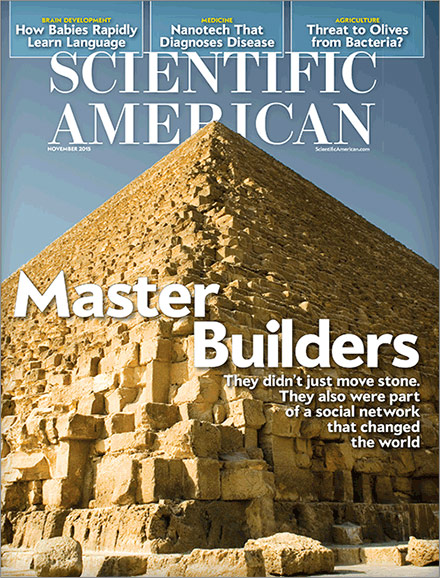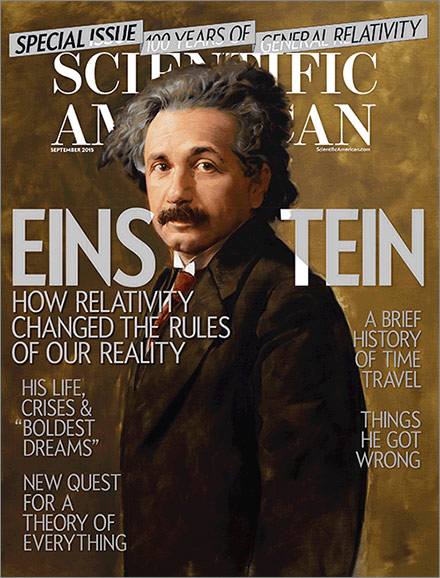Or why climate skeptics are wrong
At some point in the history of all scientific theories, only a minority of scientists—or even just one—supported them, before evidence accumulated to the point of general acceptance. The Copernican model, germ theory, the vaccination principle, evolutionary theory, plate tectonics and the big bang theory were all once heretical ideas that became consensus science. How did this happen?
An answer may be found in what 19th-century philosopher of science William Whewell called a “consilience of inductions.” For a theory to be accepted, Whewell argued, it must be based on more than one induction—or a single generalization drawn from specific facts. It must have multiple inductions that converge on one another, independently but in conjunction. “Accordingly the cases in which inductions from classes of facts altogether different have thus jumped together,” he wrote in his 1840 book The Philosophy of the Inductive Sciences, “belong only to the best established theories which the history of science contains.” Call it a “convergence of evidence.”
Consensus science is a phrase often heard today in conjunction with anthropogenic global warming (AGW). Is there a consensus on AGW? There is. The tens of thousands of scientists who belong to the American Association for the Advancement of Science, the American Chemical Society, the American Geophysical Union, the American Medical Association, the American Meteorological Society, the American Physical Society, the Geological Society of America, the U.S. National Academy of Sciences and, most notably, the Intergovernmental Panel on Climate Change all concur that AGW is in fact real. Why? (continue reading…)
read or write comments (45)
Do we perceive reality as it is?
One of the deepest problems in epistemology is how we know the nature of reality. Over the millennia philosophers have offered many theories, from solipsism (only one’s mind is known to exist) to the theory that natural selection shaped our senses to give us an accurate, or veridical, model of the world. Now a new theory by University of California, Irvine, cognitive scientist Donald Hoffman is garnering attention. (Google his scholarly papers and TED talk with more than 1.4 million views.) Grounded in evolutionary psychology, it is called the Interface Theory of Perception (ITP) and argues that percepts act as a species-specific user interface that directs behavior toward survival and reproduction, not truth.
Hoffman’s computer analogy is that physical space is like the desktop and that objects in it are like desktop icons, which are produced by the graphical user interface (GUI). Our senses, he says, form a biological user interface—a gooey GUI—between our brain and the outside world, transducing physical stimuli such as photons of light into neural impulses processed by the visual cortex as things in the environment. GUIs are useful because you don’t need to know what is inside computers and brains. You just need to know how to interact with the interface well enough to accomplish your task. Adaptive function, not veridical perception, is what is important. (continue reading…)
read or write comments (15)
At 64, Diana Nyad swam for 52 hours, 54 minutes and 18 seconds nonstop
A review of Find a Way: One Wild and Precious Life by Diana Nyad. This review was published in the Wall Street Journal on October 23. 2015.
I first met Diana Nyad in 1982 on the eve of the first 3,000-mile nonstop transcontinental bicycle Race Across America (RAAM). She was covering the race for ABC’s Wide World of Sports; I was riding in it. I knew of her 28-mile swim around Manhattan, her 102-mile open-ocean swim from North Bimini in the Bahamas to Juno Beach, Fla., and her unsuccessful attempt to swim from Cuba to Florida. So at a pre-race dinner in Los Angeles, with my nerves in my throat about undertaking my first transcontinental crossing, I asked her what it was like being a long-distance swimmer and what kept her going through both success and failure.
I don’t remember her exact words. But the single-minded intensity and strength of will that came through in her presence inspired me over the next 10 days to make it to New York.
Diana Nyad is a force of personality that anyone who meets her or hears her speak never forgets. This drive and dynamism is well captured in the title of her moving memoir Find a Way. She has—and her book shows us how we all can.
(continue reading…)
Comments Off on Just Keep Swimming
Discerning science from pseudoscience
Newton was wrong. Einstein was wrong. Black holes do not exist. The big bang never happened. Dark energy and dark matter are unsubstantiated conjectures. Stars are electrically charged plasma masses. Venus was once a comet. The massive Valles Marineris canyon on Mars was carved out in a few minutes by a giant electric arc sweeping across the Red Planet. The “thunderbolt” icons found in ancient art and petroglyphs are not the iconography of imagined gods but realistic representations of spectacular electrical activity in space.
These are just a few of the things I learned at the Electric Universe conference (EU2015) in June in Phoenix. The Electric Universe community is a loose confederation of people who, according to the host organization’s website, believe that “a new way of seeing the physical universe is emerging. The new vantage point emphasizes the role of electricity in space and shows the negligible contribution of gravity in cosmic events.” This includes everything from comets, moons and planets to stars, galaxies and galactic clusters. (continue reading…)
read or write comments (14)
How trustworthy are DNA and other crime scene tests?
The criminal justice system has a problem, and its name is forensics. This was the message I heard at the Forensic Science Research Evaluation Workshop held May 26–27 at the AAAS headquarters in Washington, D.C. I spoke about pseudoscience but then listened in dismay at how the many fields in the forensic sciences that I assumed were reliable (DNA, fingerprints, and so on) in fact employ unreliable or untested techniques and show inconsistencies between evaluators of evidence.
The conference was organized in response to a 2009 publication by the National Research Council entitled Strengthening Forensic Science in the United States: A Path Forward, which the U.S. Congress commissioned when it became clear that DNA was the only (barely) reliable forensic science. The report concluded that “the forensic science system, encompassing both research and practice, has serious problems that can only be addressed by a national commitment to overhaul the current structure that supports the forensic science community in this country.” Among the areas determined to be flawed and in need of more research are: accuracy and error rates of forensic analyses, sources of potential bias and human error in interpretation by forensic experts, fingerprints, firearms examination, tool marks, bite marks, impressions (tires, footwear), bloodstain-pattern analysis, handwriting, hair, coatings (for example, paint), chemicals (including drugs), materials (including fibers), fluids, serology, and fire and explosive analysis. (continue reading…)
read or write comments (16)





